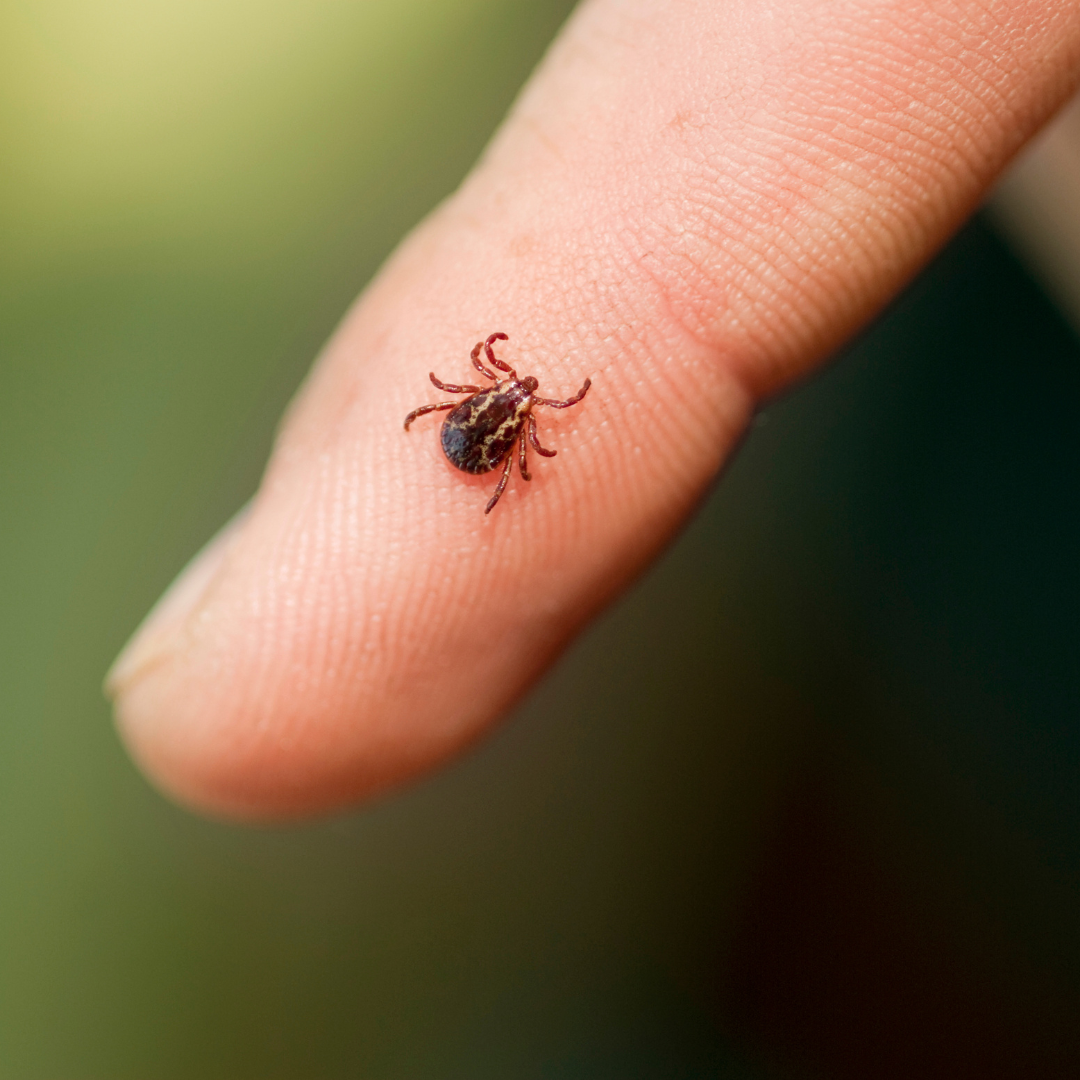Ticks are pesky little crawling insects usually found in forests and grassy areas. They attach themselves to animals like dogs and cats, often carrying diseases. Ticks are well-known for carrying Lyme disease, which many people don’t know is treatable with antibiotics. They can also carry other, more serious diseases, so it’s important to know what to do if you encounter one.
Ticks thrive in places where the weather is warm, moist, and sunny. They like to live near park trails and wooded areas. Reducing their habitat in your yard can help reduce the overall tick population. They can hide in tall grass, shrubs, bushes, and leaf litter. You might want to check the grassy areas as well as the edges of shrubbery and trees for ticks. They can also hide under leaf litter, so inspect under the leaves and piles of brush. If they get onto your pet, they could infest your home as well, by living in your carpet or upholstery or more. This is why thorough cleaning of your home with a powerful vacuum cleaner (click here to see an example) on a regular basis is important. If there are any ticks in your home, then a comprehensive vacuuming job should get rid of them.
Furthermore, you can also consider incorporating hardscapes to reduce the green spaces like walkways, patios, pergolas, etc., which will help you to efficiently treat remaining areas for tick infestation. Moreover, you can also add potted plants on hardscapes since they can be easy to maintain and keep pest-free.
These pesky blood-sucking pests that spread diseases such as Lyme disease, can come into your home without you even realizing it! They’ll hitch a ride on your clothes, your shoes, and even your pet. Since ticks are so small, they can hide anywhere on your property-including inside walls and near your home’s foundation. To keep them out of your home, you may have to try a few tips and tricks. If you are old and retired to do such DIY remedies for tick removal yourselves, consider hiring a pest control company. Alternatively, you can also look for a house in 55 and over communities in Lehigh Valley PA, (or in some other location) to get added benefits like proper outdoor maintenance, lawn mowing facilities, 24×7 medical aid, etc.
- Mow the lawn – Ticks live and breed in tall grass. Cut down the grass around your house and mow often. These creatures are most active at dawn and dusk, so mow before these hours and after dusk when the ticks are most active. Alternatively, you can also contact a lawn maintenance firm that can mow the grass precisely according to your preference. Professionals from these firms are often equipped with advanced equipment like this Bobcat Zero-Turn mower that can cut the mow the lawn in a quick span of time. Going that route, you can get the lawn mowed quickly and won’t have to deal with the pesky ticks as well.
- Repel With a Plant – Ticks can spread harmful diseases to pets and human beings. Protect your animals by deterring ticks with a plant. Lavender is naturally insect repellent. Any sort of basil plant can repel house flies and other pests. Try planting these herbs in different areas of your home. They are not only useful in keeping pests away, but they also add beauty and color to your garden.
- Don’t allow your children to play near fallen leaves – Make sure young children do not play near fallen leaves, even brown ones, as your children and pets could become infected with ticks. This is essential as it may put you at risk for Lyme disease, an illness caused by bacteria transmitted to humans through the bite of infected ticks.
- Check your pets – Ticks are tiny arachnids that are native to North America and other regions around the globe. They feed on the blood of animals, and they usually attach to them with their mouthparts. When they bite, they inject a saliva-based poison called hemolymph that commonly causes an infection called erysipelas. The bacteria can spread and even enter the bloodstream if left untreated. Make sure you check your dogs or cats from time to time for any stray ticks that might’ve gotten on.
All said and done, ticks can’t survive on their own and must attach to a host to survive. While they are most common in warmer climates, they can survive in colder regions as well. When ticks bite, it causes an allergic reaction that requires medical attention. They bring disease, pain, and death. Although most of us will only ever encounter ticks once in our lifetime, they are common, even in areas that are otherwise considered safe and free from disease.
You must know how to approach and remove a tick. Fortunately, 2 chemicals will kill them when applied on skin or clothing: permethrin and chlorpyrifos. Permethrin is a synthetic chemical that kills ticks by interfering with the protein channel on their membranes. It is a time-release chemical, so the tick must be in contact with the skin for the full effect to occur. This chemical is applied as a topical treatment, either on clothing or directly on the skin.
When thinking about insects, which ones give you the creeps? Probably spiders and mosquitoes. But ticks are creeping up, and if you live in a wooded area, tick-borne illness could be a problem. Most tick-borne illnesses are spread when ticks attach to people or animals, and when the ticks become engorged with blood, they drop off. They then crawl to the next host, hoping to attach themselves and transmit the illness. Don’t be scared, though! This article has hopefully given you an initial idea of how to be on the lookout for ticks, so you can definitely spot and prevent them from causing you or your pets any harm.

